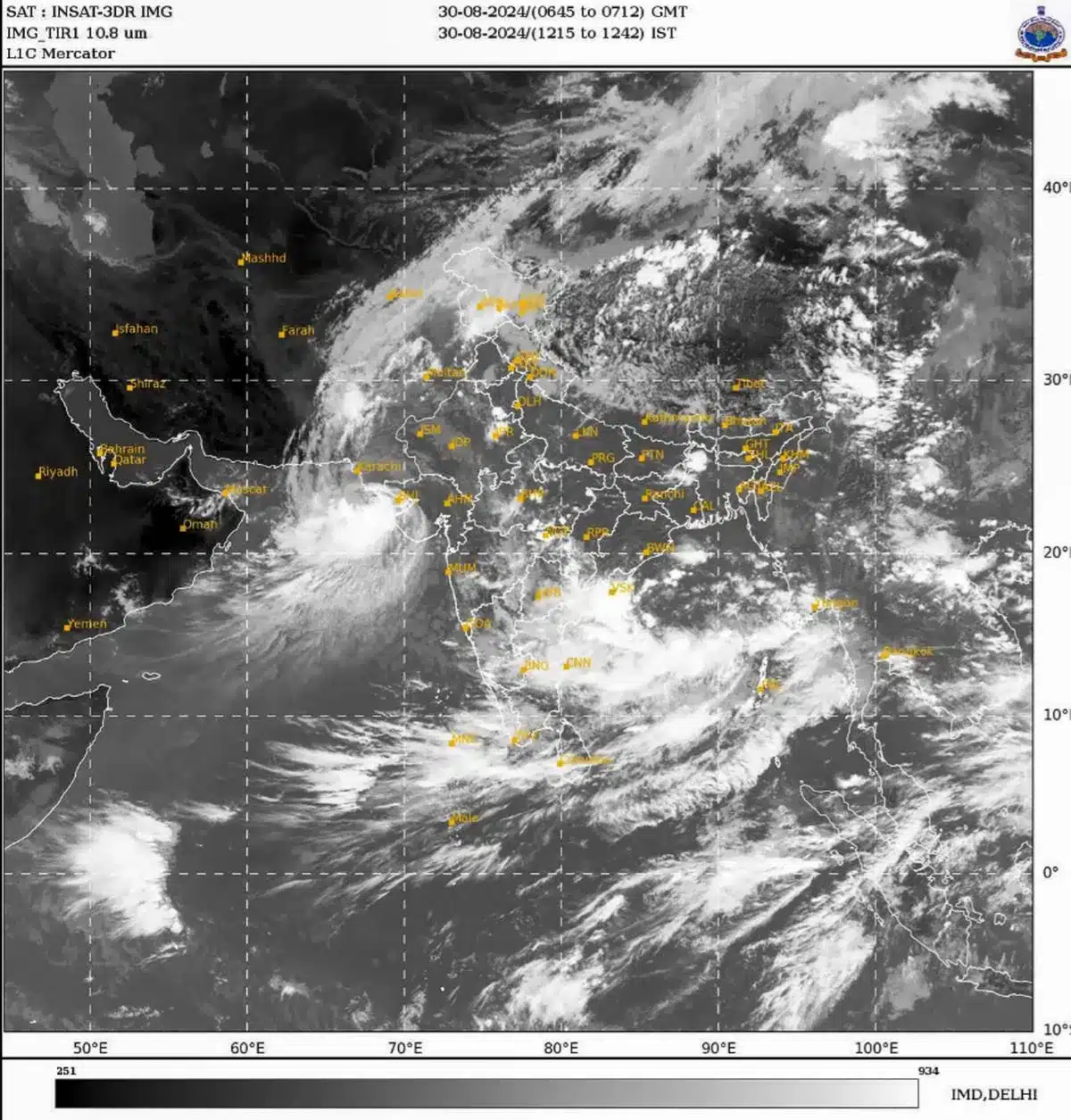What’s in today’s article?
- Background
- Why is the Indian Ocean Unique?
- Monsoonal Influence on Cyclogenesis
- Impact of Climate Change on the Indian Ocean
- The Role of the Indian Ocean in Global Warming
- Cyclone Seasons in the North Indian Ocean
- Cyclones in the Arabian Sea and Bay of Bengal
- Cyclone Asna
- The Broader Impact of Climate Change on Cyclones
- Conclusion
Background
- The North Indian Ocean plays a crucial role in influencing India’s weather patterns, especially during the summer monsoon.
- It supplies a significant amount of moisture, which is critical for the monsoon rains.
- Despite this, the region experiences fewer cyclones compared to other oceanic basins globally.
- This article analyzes the unique nature of the North Indian Ocean, how climate change is impacting it, and the recent developments concerning cyclones in the region.
Why is the Indian Ocean Unique?
- The Indian Ocean stands out due to its complex climate interactions. It is connected to both the Pacific and Southern Oceans through “oceanic tunnels“.
- The Pacific Ocean brings warm water into the Indian Ocean, while the Southern Ocean brings cooler water.
- This unique combination leads to varied sea temperatures, which in turn impact monsoon winds and cyclogenesis (the formation of cyclones).
Monsoonal Influence on Cyclogenesis
- The Arabian Sea and the Bay of Bengal, both parts of the Indian Ocean, warm up significantly before the monsoon.
- The Bay of Bengal, in particular, becomes a hotbed for atmospheric convection, which leads to rainfall and low-pressure systems.
- These systems, however, rarely turn into cyclones because of a phenomenon known as “vertical shear“.
- This shear strips cyclones of their energy, especially during the monsoon season.
Impact of Climate Change on the Indian Ocean
- Climate change is significantly altering the Indian Ocean’s dynamics.
- Increased warming from the Pacific Ocean and changes in atmospheric conditions are causing rapid warming of the Indian Ocean itself.
- This warming is influencing the monsoon and leading to new challenges in terms of cyclogenesis and extreme weather events.
- Cyclogenesis refers to the process of cyclone formation and intensification, which occurs when favorable atmospheric and oceanic conditions come together.
The Role of the Indian Ocean in Global Warming
- The Indian Ocean acts as a clearinghouse for global ocean warming, impacting other oceans like the Pacific and the North Atlantic.
- As the Indian Ocean warms, it alters global ocean currents and affects climate patterns across the world.
- This has had a direct impact on cyclogenesis, contributing to the increasing unpredictability of cyclones in the region.
Cyclone Seasons in the North Indian Ocean
- The North Indian Ocean is unique in that it has two distinct cyclone seasons, one before the monsoon and one after, unlike other regions of the world, which typically experience only one cyclone season.
- During the pre-monsoon season, the Arabian Sea experiences less cyclone activity due to cooler sea temperatures and limited convection.
- On the other hand, the Bay of Bengal remains more active during both seasons.
Cyclones in the Arabian Sea and Bay of Bengal
- The Arabian Sea sees fewer cyclones compared to the Bay of Bengal.
- This is due to lower convective activity, stronger wind shear, and cooler sea temperatures, especially after the monsoon season.
- While the number of cyclones in the Bay of Bengal has remained relatively stable, the Arabian Sea has seen a slight increase in cyclone activity since 2010, although it has been calm in recent years.
Cyclone Asna
- Cyclone Asna was an unusual cyclone that formed in August 2023, marking the first North Indian Ocean cyclone in August since 1981.
- What made Asna particularly unusual was that it originated from a land-based low-pressure system.
- Such systems typically form over the Bay of Bengal and bring heavy monsoon rains to India.
- However, this particular system transitioned into a full-fledged cyclone after moving into the Arabian Sea.
- Unusual Nature of Asna:
- The transition of this low-pressure system into a cyclone over land and its subsequent growth over the Arabian Sea was unexpected.
- The warming Arabian Sea, fueled by global warming and regional weather patterns, provided the necessary energy for Asna to intensify.
- However, it eventually dissipated due to dry desert air entering the cyclone’s circulation.
The Broader Impact of Climate Change on Cyclones
- Climate change is making cyclones in the Indian Ocean more unpredictable.
- Factors such as global warming, El Niño, and even underwater volcanic eruptions have contributed to extreme weather events worldwide, including India.
- The monsoon season has also become increasingly erratic, with unpredictable rainfall patterns across the country.
Conclusion
- The Indian Ocean is at the center of many climate change-driven phenomena, especially concerning cyclones.
- While the region remains less prone to cyclones compared to other parts of the world, the increasing unpredictability of these storms, driven by climate change, presents significant challenges for India and its neighbors.
As climate change continues to affect global weather patterns, understanding and predicting these changes will be crucial for mitigating their impacts on vulnerable populations.
Q1. What do you mean by Indian Ocean Dipole?
The Indian Ocean Dipole, also known as the Indian Niño, is an irregular oscillation of sea surface temperatures in which the western Indian Ocean becomes alternately warmer and then colder than the eastern part of the ocean.
Q2. Which Ocean is the coldest ocean?
The Arctic Ocean is the smallest and shallowest of the world’s five oceanic divisions. It is the coldest ocean amongst all.
Last updated on June, 2025
→ UPSC Notification 2025 was released on 22nd January 2025.
→ UPSC Prelims Result 2025 is out now for the CSE held on 25 May 2025.
→ UPSC Prelims Question Paper 2025 and Unofficial Prelims Answer Key 2025 are available now.
→ UPSC Calendar 2026 is released on 15th May, 2025.
→ The UPSC Vacancy 2025 were released 1129, out of which 979 were for UPSC CSE and remaining 150 are for UPSC IFoS.
→ UPSC Mains 2025 will be conducted on 22nd August 2025.
→ UPSC Prelims 2026 will be conducted on 24th May, 2026 & UPSC Mains 2026 will be conducted on 21st August 2026.
→ The UPSC Selection Process is of 3 stages-Prelims, Mains and Interview.
→ UPSC Result 2024 is released with latest UPSC Marksheet 2024. Check Now!
→ UPSC Toppers List 2024 is released now. Shakti Dubey is UPSC AIR 1 2024 Topper.
→ Also check Best IAS Coaching in Delhi
























